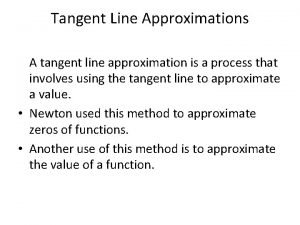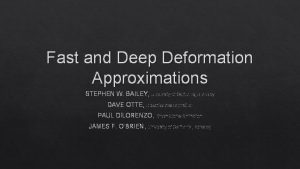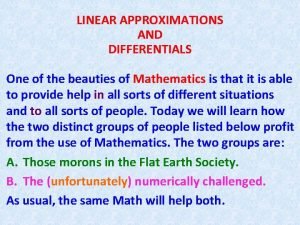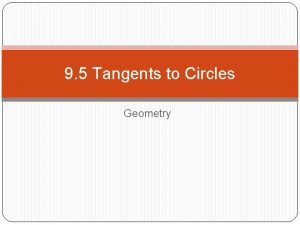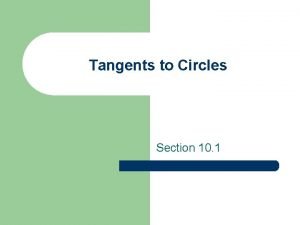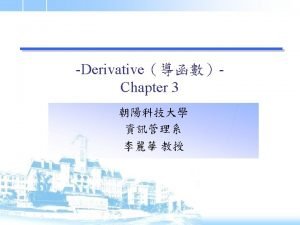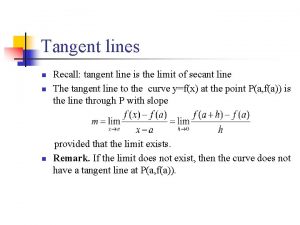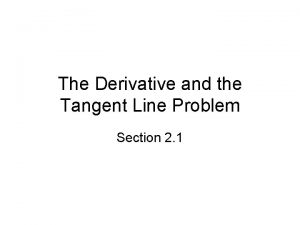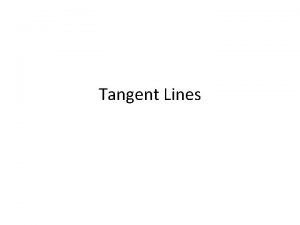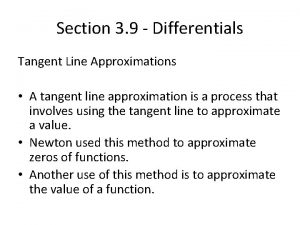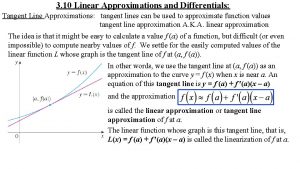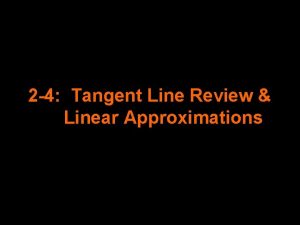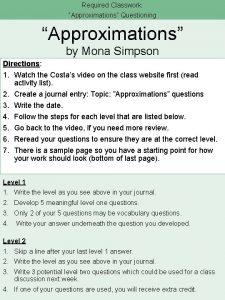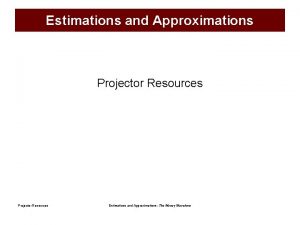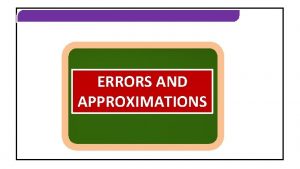Tangent Line Approximations A tangent line approximation is








- Slides: 8

Tangent Line Approximations A tangent line approximation is a process that involves using the tangent line to approximate a value. • Newton used this method to approximate zeros of functions. • Another use of this method is to approximate the value of a function.

Approximating the Value of a Function To approximate the value of f at x = c, f(c): 1. Choose a convenient value of x close to c, call this value x 1. 2. Write the equation of the tangent line to the function at x 1. y – f(x ) = f ’(x )(x - x ) 3. Substitute the value of c in for x and solve for y. 4. f(c) is approximately equal to this value of y. 1 1 1

Example 1 If , use a tangent line approximation to find f(1. 2). 1. Since c = 1. 2, choose x 1 = 1, which is close to 1. 2 2. Since f(1) = 4 and f’(x) = 2 x gives f’(1) = 2, then eq. of tangent line is y – 4 = 2(x – 1) 3. Substitute 1. 2 in for x and y = 4 + 2(. 2) = 4. 4 4. Therefore, since 1 is close to 1. 2, f(1. 2) is close to 4. 4 5. Check this with the actual value f(1. 2) = 4. 44

Example 2 Approximate sqrt(18) using the tangent line approximation method (also called using differentials). 1. Choose x 1 = 16 and let f(x) = sqrt(x), then f (x 1) = 4 and f’(x 1) = 1/(2*sqrt(16)) = 1/8 2. Eq. of Tangent: y – 4 = (1/8)(x – 16) 3. When x = 18, y = 4 + (1/8)(2) = 4 + ¼ = 4. 25 4. Therefore sqrt(18) is approximately 4. 25 5. Check with sqrt(18) on your calculator: 4. 243…

Definition of Differentials Let y = f(x) represent a function that is differentiable in an open interval containing x. Since then Therefore • dx is called the differential of x and is equal to � x. • dy is called the differential of y and is approximately equal to � y as long as � x is close to zero.

Example 3 Find both � y and dy and compare. y = 1 – 2 x 2 at x = 1 when � x = dx = -. 1 Solution: � y = f(x + � x) – f(x) = f(. 9) – f(1) = -. 62 – (-1) =. 38 dy = f’(x)dx = (-4)(-. 1) =. 4 ** Note that � y ≈ dy

Example 4 The radius of a ball bearing is measured to be. 7 inches. If the measurement is correct to within. 01 inch, estimate the propagated error in the volume V of the ball bearing. ** Propagated error means the resulting change, or error, in measurement

Example 4 Continued To decide whether the propagated error is small or large, it is best looked at relative to the measurement being calculated. • Find the relative error in volume of the ball bearing. ** Relative error is dy/y, or in this case d. V/V • Find the percent error, (d. V/V)*100.
